How to solve the interference problem in the motor controller EMC test process?
1. The generation of ground loop interference problems
In the EMC test rectification process of the motor controller, 32M, 41M, 65M exceeded the standard when testing the low-voltage side of the conduction emission, as shown in Figure 1. The effect of debugging the low-voltage side filter parameters is not obvious, considering the motor controller in the whole vehicle in installation environment and previous rectification experience, the motor controller shell is added to the grounding point, become two points grounding, 32M, 65M significantly reduced, 6.1M appears to exceed the standard, as shown in Figure 2, then for the 6.1M frequency point to rectify.
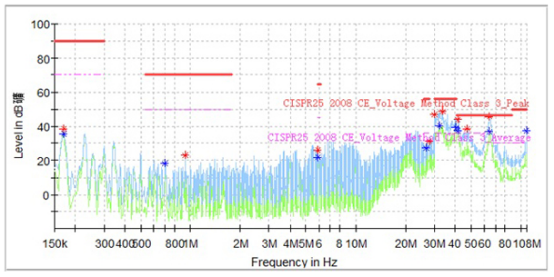
Figure 1, the initial scan results
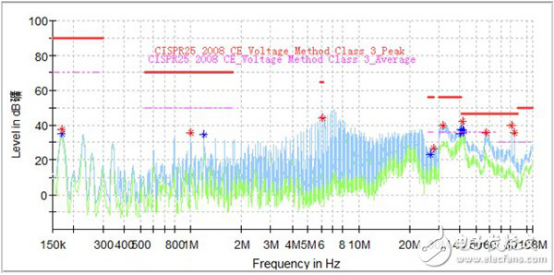
Figure 2. Scan results after adding a grounding point, 6.1M exceeds the standard
2. Test and analysis of ground loop interference problems
Since the motor controller conducts the low-voltage side of the motor and only needs to test the 12V/24V power line, and does not directly test the DCDC output line, it is speculated that the 6.1M interference is that the DCDC module is coupled to the 12V/24V power line through the harness. First, the ferrite magnetic ring is placed on the relevant signal line of the DCDC module, and the frequency of the 6.1M frequency is not improved; the copper wire is used to wrap the signal line and bond the inner wall of the casing, which has no effect; the ferrite magnetic ring is set on the CAN communication line of the DCDC module has no effect.
Use a spectrum analyzer and a near-field probe to locate the noise point and determine that interference is from the DCDC output line of the motor controller. The DCDC module is the largest source of interference in the motor controller. The interference is easily conducted outward through the output cable or directly radiated through the space, even coupled to other power lines and signal lines. In addition, the DCDC output cathode is directly connected to the chassis through the sheet metal member, that is, it has connected to the ground reference plane. If the processing is not good, the ground potential may be unstable.
The test N multi-method still has no way to 6.1M frequency point, recalling where the 6.1M frequency point comes from, guessing whether it is caused by increasing the grounding point, so try to remove the increased grounding point, and the 6.1M frequency point will change immediately good, as shown in Figure 3.
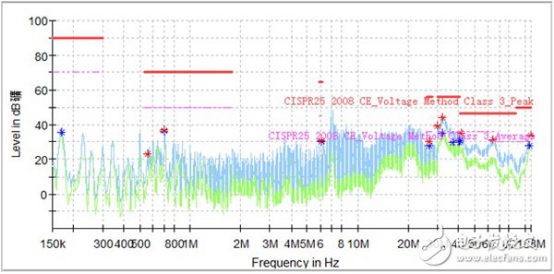
Figure 3. Scan results after removing the grounding point
The increased grounding point is restored, and the 6.1M exceeds the standard, which can restore the phenomenon, indicating that the interference at 6.1M is indeed caused by the grounding problem. Observe the position of the added grounding point, just between the positive and negative poles of the DCDC output line. As shown in Figure 4, the initial grounding point of the machine is as shown in Figure 5. The copper strip woven network is connected to the ground reference plane. The grounding at two points will cause ground loop interference. The 6.1M over-standard is likely caused by ground loop interference.
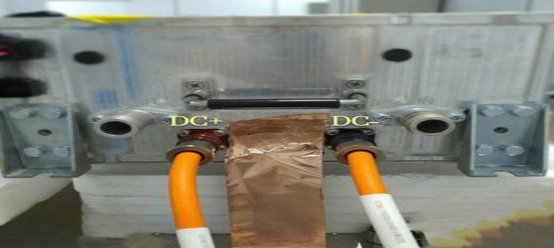
Figure 4. Physical location of the added ground point

Figure 5, the initial grounding position of the controller
When the DCDC module is operating, the DC+ and DC-output lines carry a strong interference current, and the DC- is directly connected to the chassis. The test model diagram is shown in Figure 6. When there is no ground point B, the interference current mainly forms a loop through the stray capacitance between the DC output line and the ground reference plane; when the grounding point B is increased between DC+ and DC-, a direct low-impedance path is provided for the interference current, and a ground loop current occurs, resulting in a larger common mode current, and thus a phenomenon in which the conducted emission exceeds the standard.

Figure 6. Test system model diagram (ground point C is required by the test standard: low voltage battery negative ground)
3. Solution of ground loop interference problem
The intrinsic cause of ground loop interference is the presence of ground loop current. The ground loop current is caused by the difference in potential between the two ground points. Commonly used methods to solve the ground loop interference problem are single-point grounding, isolation by isolation transformer or optocoupler isolator, installation of common mode choke to increase ground loop impedance. In this rectification test, it is only necessary to move the increased grounding point away from the DCDC output line to ensure that the potentials of the two grounding points are close to avoid and reduce the ground loop interference. As shown in Figure 7, the added grounding point is placed on the other side of the machine, away from the interference output, it can avoid the 6.1M exceeding the standard and suppress the 32M, 41M and 65M interference points, as shown in Figure 8, combined with other measures, It is possible to pass the conducted emission test.

Figure 7. Location of the added ground point after analysis
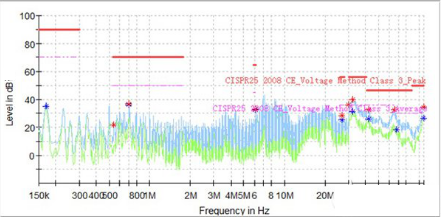
Figure 8. Scan results after changing the ground point position
4, summary
Two-point grounding and multi-point grounding can easily cause ground loop interference problems. Pay special attention when there is an output cable in the machine casing to prevent the potential difference between the grounding points from being too large. When the frequency is low, try to select a single point grounding. Grounding technology is the easiest and lowest cost technology to solve electromagnetic compatibility problems, and it is also the most demanding technology. Therefore, considering the grounding method and grounding position in the early stage of design will greatly help subsequent EMC testing and rectification.
If you want to know more, our website has product specifications for motor controller, you can go to ALLICDATA ELECTRONICS LIMITED to get more information

